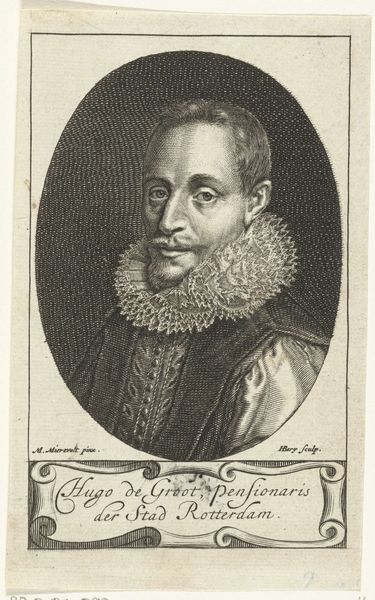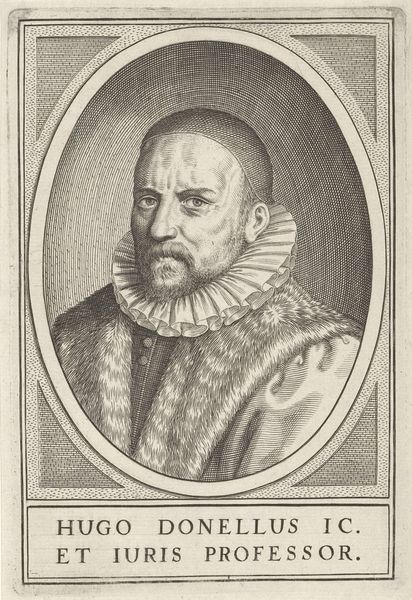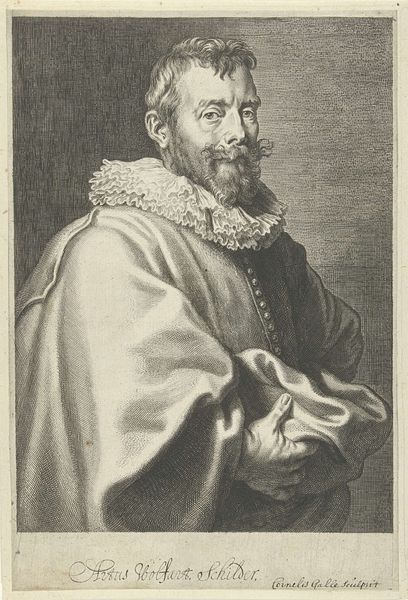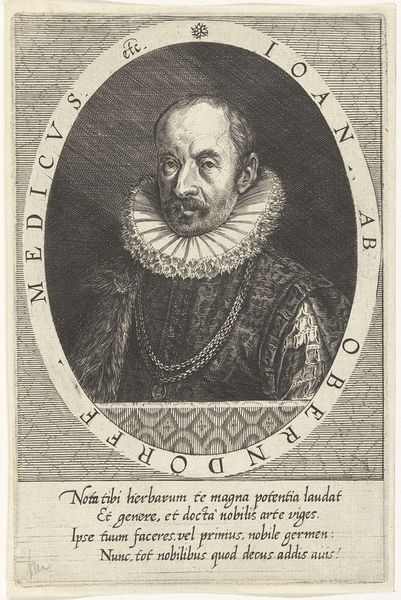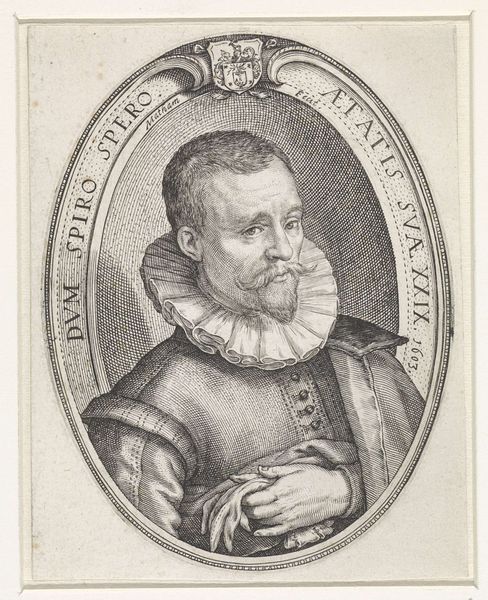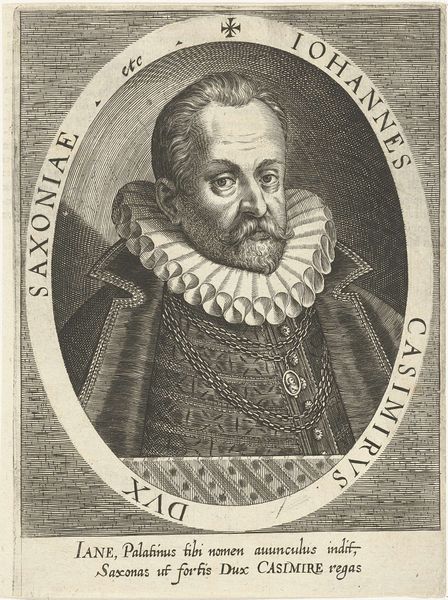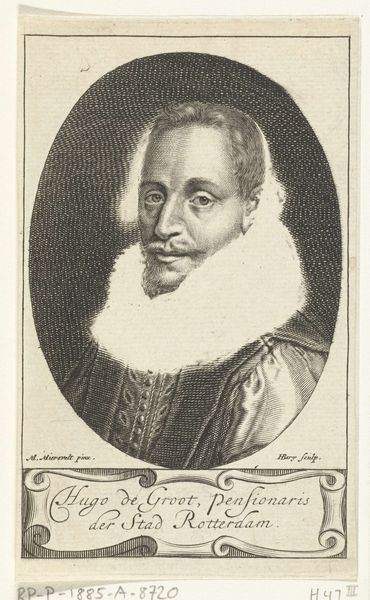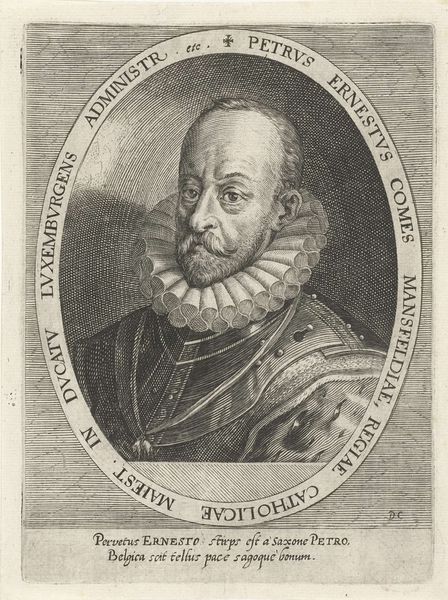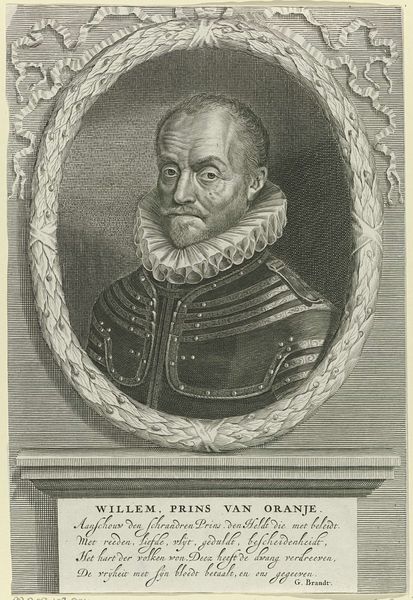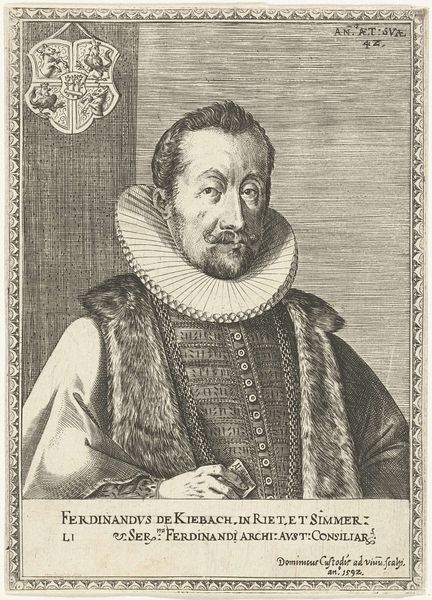
print, engraving
#
portrait
#
baroque
# print
#
old engraving style
#
engraving
Dimensions: height 143 mm, width 85 mm
Copyright: Rijks Museum: Open Domain
Curator: Let's examine this print, a baroque-style portrait titled "Portret van Miguel de Cervantes de Saavedra". Jacob Folkema produced this engraving sometime between 1702 and 1767. What are your initial thoughts? Editor: Stark, almost austere. The sharp lines of the engraving, the ruff collar, create a sense of formality, perhaps even constraint. Curator: Yes, Folkema's meticulous use of line weights certainly contributes to the overall tone. Observe how he employs hatching and cross-hatching to create gradations of light and shadow. These techniques animate the composition while adhering to representational accuracy. Editor: The materiality is interesting though. Considering it's a print, a reproductive medium, what does it say about the construction of Cervantes' image? The layering of ink, the pressing of the plate…it speaks volumes about dissemination and accessibility of representation in that period. And it raises a question of how we consume images. Curator: I concur. Note how Folkema directs our gaze through the strategic placement of Cervantes’ figure and implements baroque pictorial logic of dynamism with dramatic intensity to convey status. Observe the contrast of tones between background details such as books or curtains, enhancing visual depth to command the viewer’s gaze. Editor: Indeed, the reproduction becomes a process not just of duplication but also of interpretation, informed by the socio-economic structure of the era and consumer culture. Look at the meticulous details—a labor of skill making art accessible to society. The paper itself is an essential element. Curator: In closing, Folkema masterfully uses the inherent qualities of the engraving medium to articulate both physical likeness and inner character. His strategic application of line and shadow crafts the very essence of Cervantes, capturing the subject with striking vitality and nuance. Editor: Exactly. By understanding not just what this print depicts, but how and why it was made, we can better appreciate the material realities that helped disseminate the iconic image of Cervantes and consider how art, society and consumerism entwine to shape the material history.
Comments
No comments
Be the first to comment and join the conversation on the ultimate creative platform.
